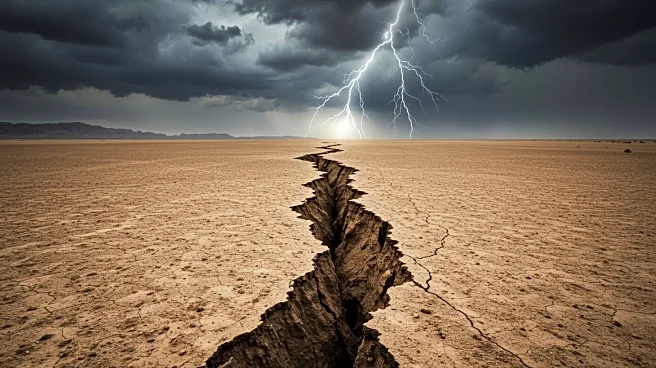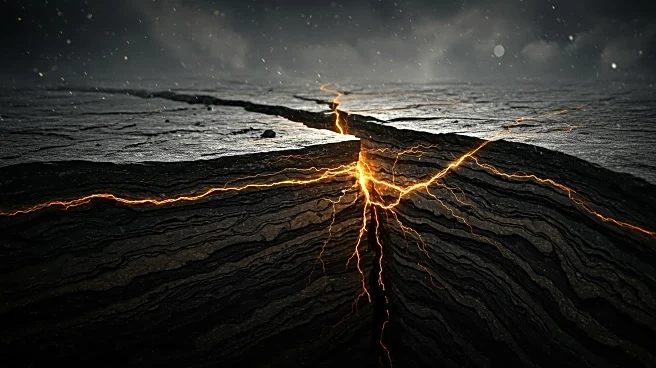Rapid Read • 7 min read
Caltech researchers have analyzed the recent magnitude 7.7 earthquake in Myanmar, which occurred along the Sagaing Fault on March 28, 2025. The study, led by Jean-Philippe Avouac, utilized satellite imaging to reveal that the fault slipped over 500 kilometers, challenging previous assumptions about earthquake cycles. This event has raised concerns about similar strike-slip faults, such as California's San Andreas Fault, potentially producing unprecedented quakes. The findings suggest that these faults can release energy in ways not previously recorded, indicating a need to rethink current earthquake forecasting models.
AD
The implications of this study are significant for seismic hazard assessment in California and other regions with similar geological features. The research suggests that traditional models, which rely on historical earthquake data, may not fully capture the potential for future seismic events. This could impact public policy and preparedness strategies, as communities may need to consider more dynamic and complex forecasting methods. The potential for larger-than-expected earthquakes poses risks to infrastructure, economic stability, and public safety, necessitating a reevaluation of current mitigation strategies.
The study calls for the development of physics-based models that incorporate recent fault activity and slip measurements to provide more accurate, time-dependent forecasts. This approach could improve earthquake preparedness and response strategies, potentially influencing building codes, insurance policies, and emergency planning. Stakeholders, including government agencies and scientific communities, may need to collaborate on integrating these findings into practical applications to enhance resilience against future seismic threats.
The research highlights the limitations of relying solely on historical records for earthquake prediction, emphasizing the need for innovative approaches that consider the complex nature of fault systems. This could lead to advancements in geotechnical engineering and seismic risk management, fostering a deeper understanding of earthquake dynamics and their societal impacts.
AD
More Stories You Might Enjoy












